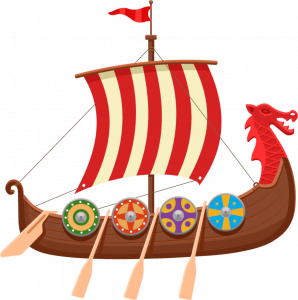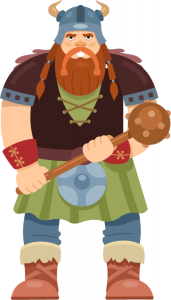What is a Kenning?

Imagine you are a secret agent, and instead of saying the name of something directly, you say it in a secret code; you describe it in a clever new way. That’s what a “kenning” does! A kenning is like a little riddle made of two words that describe something without using its name. For example, instead of “ocean,” you might say “whale-road.” Instead of “boat” you might say “wave-traveler.” Sounds fun, right?
Origins of Kenning Poems

Kenning poems come from long ago, used by the Vikings and people in Northern Europe. Yes, even Vikings wrote poetry! These poems didn’t just tell a story; they made it exciting with these special word puzzles.
Creating Kennings
To create your own kennings, think about the attributes (qualities or features) and actions (things it does) of your chosen subject. Look for clues to describe your subject in a fun way.
- Attributes: These are things that describe what your subject is like. If your subject is a tree, its attributes include branches, leaves, a trunk, it’s height, etc. So, you could create kennings like “branch-tower” or “leaf-waver.”
- Actions: These are things that your subject does. If your subject is a dog, it might “bark,” “run,” or “wag its tail.” From these actions, you could think of kennings like “bark-maker” or “tail-wagger.”
By focusing on both what your subject is like and what it does, you can come up with a whole world of creative kennings. This makes your poem not just a bunch of words, but a lively picture painted with your imagination!
How to Write Your Kenning Poem
1. Choose a Topic: Pick something you like or find interesting. It could be an animal (a cat, a fish, a dinosaur, etc.) a place (your school, the beach, the moon, and so on), or even a person (an artist, a football player, a character from a book or movie, you get the idea).
2. Brainstorm Kennings: Think of descriptive and fun ways to talk about your topic without saying its name. If your topic is a “book,” you might think of “story-haven” or “page-palace.”
3. Put Your Kennings Together: Start putting these kennings into short lines to form a poem. Remember, there’s no need for it to rhyme, and your poem can have as many or as few kennings as you like!
4. Be Creative: The best part about kenning poems is how creative you can be. Mix and match words and see what interesting kennings you can come up with!
Example Kenning Poem
If I choose a cat as my topic, my kenning poem might look like this:
Whisker-painter
Purr-machine
Mouse-chaser
Night-explorer
Or, if I were writing about the ocean, I might create something like this:
Horizon-hugger
Fish-playground
Ship-road
Wave-shaper
Moon-mirror
Tide-cradle
This poem uses kennings to describe various aspects of the ocean, from its interaction with the moon and tides to its role as a habitat for marine life and a path for ships. It paints a picture of the ocean’s vast and dynamic nature.
Give it a Title
Once you are done writing your kenning poem, give it a title. If you want people to know ahead of time what your poem is about, try using the subject as the title. For example, you might simply call your poem “Cat” or “Ocean.”
On the other hand, if you want your poem to be more of a puzzle for readers to figure out, give it a title such as “What Am I?” or “Who Am I?” Then the kennings in your poem are clues to the mystery in the title’s question. Here’s an example. It’s up to you to figure out what this kenning poem is about.
What Am I?
Tentacle-twister
Ink-squirter
Reef-dancer
Camouflage-master
Shape-shifter
Ocean-wonder
Your Turn!
Now it’s your turn to become a kenning poet. Pick a topic, brainstorm your kennings, and put them into a poem. Have fun, and remember, there’s no wrong way to create your kenning poem! It’s all about using your imagination and having fun with words. Happy writing!
- Update to Poems-by-Length Page - April 18, 2024
- Create Your Own Poetic Puppet Show - April 16, 2024
- Leap into Laughter with “A Festival for Frogs” - March 26, 2024






